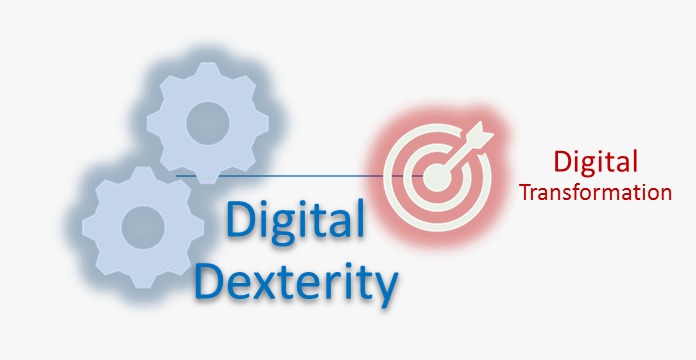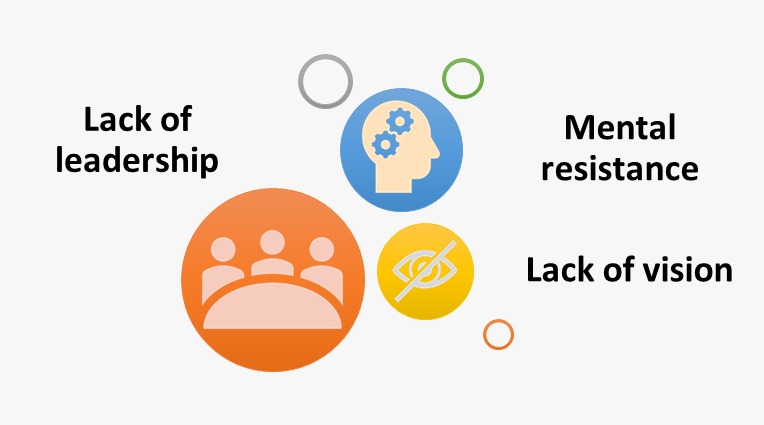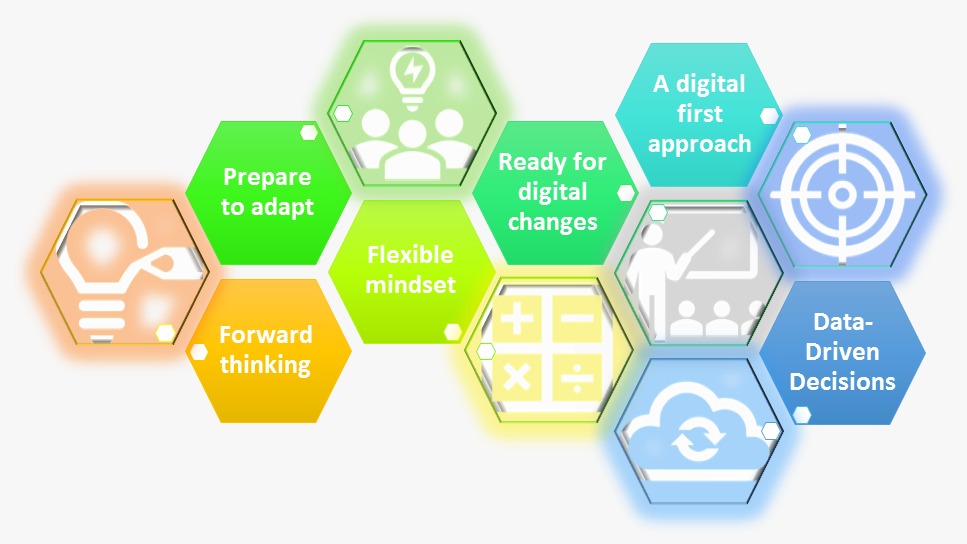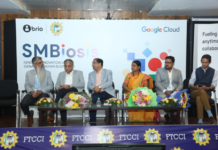
Communication, collaboration, data, insights, talent management, skills development, and training are essential aspects of digital dexterity to make an impact at the enterprise level
This is an exclusive interview conducted by the Editorial Team of CIO News with Ahmad Altarawneh, Senior Strategic Consultant Digital Transformation, Pioneering and Excellence at Dubai Police General HQ, on:
Why do Organizations Need Digital Dexterity to achieve Successful Digital Transformation?

For more than a decade, organizations of all sizes have been planning their digital transformation – formally ditching out-dated systems and processes in favour of new technology designed to maximize efficiency and effectiveness. Unfortunately, those big plans often faded outside the boardroom. Even as companies invested in the latest and greatest software, people resisted change.
But the Corona epidemic crisis changed everything. Overnight, organizations had to upgrade to modern communication and collaboration systems that supported remote working methods and other emerging technologies to transform into the new norm. And while the deployments and adoptions were at times a bit tricky, the teams adjusted quickly. With tools like Slack, Zoom and Microsoft Teams becoming the norm, even the least technically proficient employees eventually learned to work with these technologies.

Today, it is imperative that public and private organizations learn to harness and expand the new digital dexterity of the workforce. We delve into what that means and how you can bring sustainable digital dexterity into your organization. In this context, we will answer several questions:
What is Digital Dexterity?
Digital dexterity is the ability of an individual or organization to adapt to new technology—particularly technology designed to help people work more efficiently and achieve better results.
When the workforce is digitally skilled, they are agile, skilled, and open to new tools. And while employees may still face challenges when adapting to a new product or process, those who are digitally savvy are driven by their initial discomfort and strive to master new tools.
And while digital dexterity requires a certain amount of skill (or at least a solid understanding of business technology), it is fundamentally rooted in your organization’s culture and resulting mind-set. When people feel supported and empowered to learn new things, they are more likely to acquire digital dexterity than those who are carefully managed and fear change.
Why do some organizations lack Digital Dexterity?

Lack of leadership: We’ve already discussed that there is no single owner to enable digital dexterity (DD), but that doesn’t mean the organization doesn’t need any leadership to inspire digital dexterity.
Leadership within the team and at the top is essential as it can encourage and enhance DD throughout the organization.
If the leadership feels otherwise and rejects the idea of digital dexterity (DD), the company will struggle to deal with industry trends, coop with the fast-paced global change, and face competition head-on.
Lack of vision: Many organizations realize the importance of digital dexterity but fail to define what it is and how they will deal with it. When there is no proper vision and roadmap, it becomes difficult to implement and achieve the expected result.
Mental resistance: Employees sometimes resist the idea of digital dexterity which may hinder the organization’s goal of achieving better business results. If employees resist, there is a very high chance that your organization will fail while adopting new technology and process. It is essential to make them realize the value of digital dexterity and the positive impact it can have.
What qualities are associated with Digital Dexterity?
To enhance your organization’s digital dexterity, you’ll need to start by understanding the qualities most associated with these capabilities and finding ways to nurture them throughout your business.

Forward-thinking
Is your organization focused on the future or stuck in the past? Success in today’s constantly evolving challenging world means keeping a close eye on current trends while at the same time anticipating what’s to come. In terms of technology, that means seizing opportunities to become an early adopter and helping your workforce master a solution ahead of your competition.
Flexible mind-set
All too often, teams become trapped in an out-dated way of thinking, “If it isn’t broke, don’t fix it.” This makes sense since humans are habitual creatures that tend to stay where we feel most comfortable. But when your workforce is so committed to legacy products and processes, it limits innovation. To overcome this, companies must encourage agility and exploration. Employees must understand that it is okay to fail as long as they learn from those failures.
Prepare to adapt
Negativity is contagious – especially when it comes from above. Oftentimes, employees slow down and resist adapting because this is the prevailing attitude in their departments. This is why it is so important to find and empower champions of change who can help drive forward momentum.
Ready for digital changes
How prepared are your employees when it comes time to implement a new solution? Getting ready requires more than an email memo or a brief announcement in the middle of an all-encompassing meeting. To improve your company’s digital dexterity, you need to ensure that they have insight into upcoming initiatives long before they are rolled out, as well as a place to access information, such as a knowledge management platform, so they can quickly beat the learning curve.
A digital-first approach
When you encounter a customer’s problem or need, do you think of solving it through innovative technology? Becoming a digital-first means embedding digital solutions into every decision and leveraging digital products or platforms before resorting to traditional methods. Developing a digital approach first takes time, but eventually, it becomes automatic.
Data-Driven Decisions
Rather than relying solely on instinct or assumptions, digitally skilled leaders consult numbers first and use those insights to ensure they make the best possible choice. After all, access to data is one of the greatest benefits of digital transformation. The more you collect, organize, and use the data available to you, the better off you will be.
What are the benefits of Digital Dexterity?
It is difficult to achieve a state of digital skill. But once this is achieved, the organization can enjoy many benefits, such as:
- Higher Productivity: – The user becomes more productive as he can make full use of the application.
- Improved Efficiency: – The efficiency of users is improved so they can get the same task done in less time
- Total Agility: – Skilled employees tend to adapt to any new roles and responsibilities that can open up a lot of possibilities for the company.
- Advanced Risk Tolerance: Risk appetite increases once employees enter digital dexterity mode and understand the benefits of doing so.
- Better Digital Adoption: – It also boosts the digital adoption rate because employees and other users are able to achieve digital dexterity.
Finally…Digital Dexterity requires leaders to take initiative and encourage employees to break down barriers by having a forward-looking mind-set. While technological competence is essential, the right attitude to lead and adopt digital technology and change is imperative, as organizations strive to move from periodic to REAL-TIME.
Communication, collaboration, data, insights, talent management, skills development, and training are essential aspects of digital dexterity to make an impact at the enterprise level.
A strong foundation is essential before any initiatives and this case must be established by HR, IT, and team leadership.
Also read: CIO News interviews Shri Wangki Lowang, Minister (IT) of Arunachal Pradesh
Do Follow: CIO News LinkedIn Account | CIO News Facebook | CIO News Youtube | CIO News Twitter
About us:
CIO News, a proprietary of Mercadeo, produces award-winning content and resources for IT leaders across any industry through print articles and recorded video interviews on topics in the technology sector such as Digital Transformation, Artificial Intelligence (AI), Machine Learning (ML), Cloud, Robotics, Cyber-security, Data, Analytics, SOC, SASE, among other technology topics





